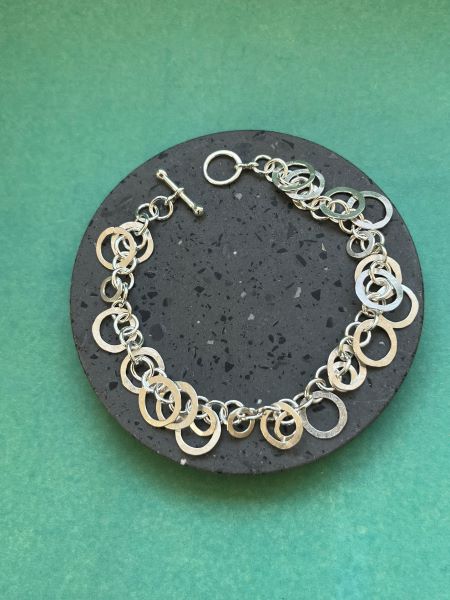A sterling silver bracelet adorned with large hammered hoops is a delightful project for the festive season, offering a playful yet elegant twist on classic jewellery making. The overlapping circles create a light, “bubbly” effect that catches the light beautifully, adding movement and texture to your design. This project allows you to experiment with shaping, hammering, and attaching larger hoops to a chain, giving you the freedom to explore both structure and creativity.
Watch a step by step video guide on how to create this project below:
Step 1
Begin by joining together the 6mm sterling silver jump rings in a chain.
To open a jump ring, grip each side with flat nose or chain nose pliers and twist one hand forward and the other back (never pull apart).
Note: For a 7.5 inch bracelet join 43 x 6mm jump rings
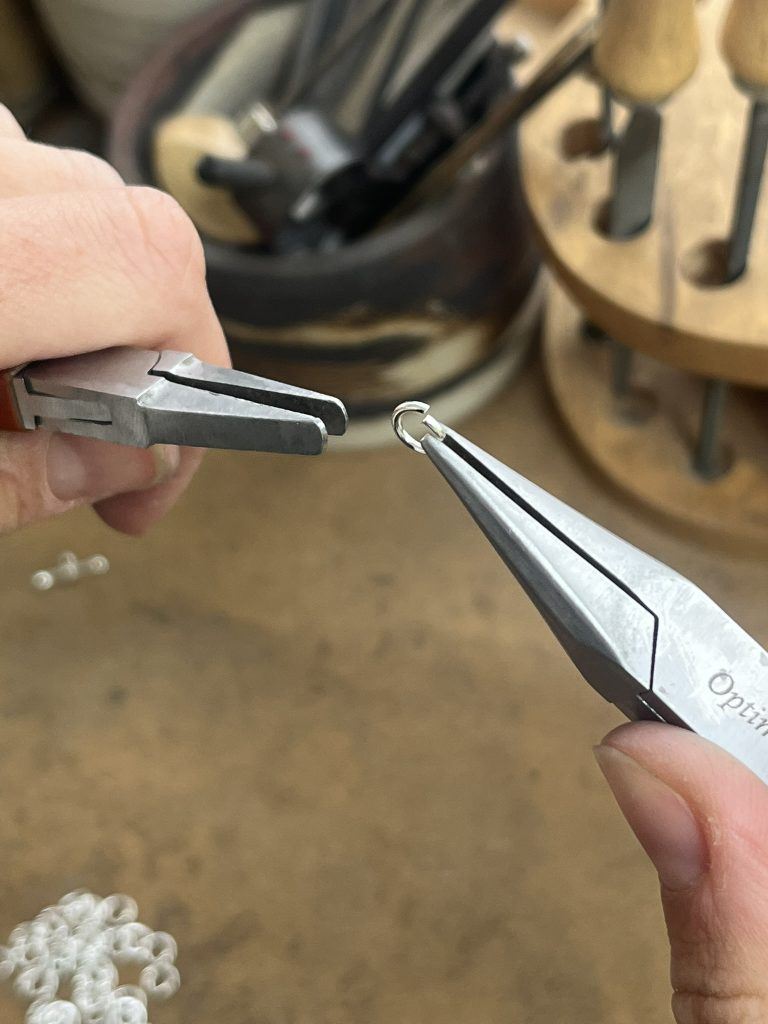
Step 2
To close, twist the ends back past each other slightly, then align them until they touch smoothly with no gap.
Using the same technique add each part of the toggle clasp to either end of the chain.
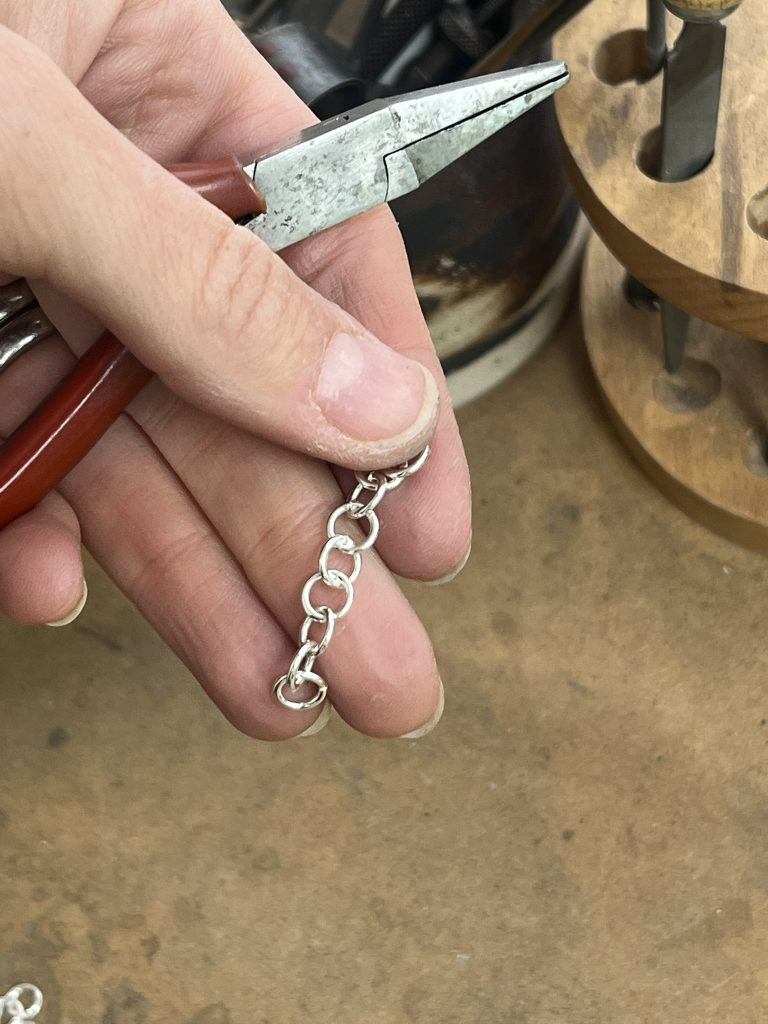
Step 3
Next solder each individual join on the jump rings. Using reverse action tweezers hold the first jump ring to be soldered so that the join is clearly exposed.
Place the tweezers on a soldering block ensuring the chain is well out of the way or use a third hand to hold the tweezers.
Add a little solder paste to the jump ring join and place on a soldering block.
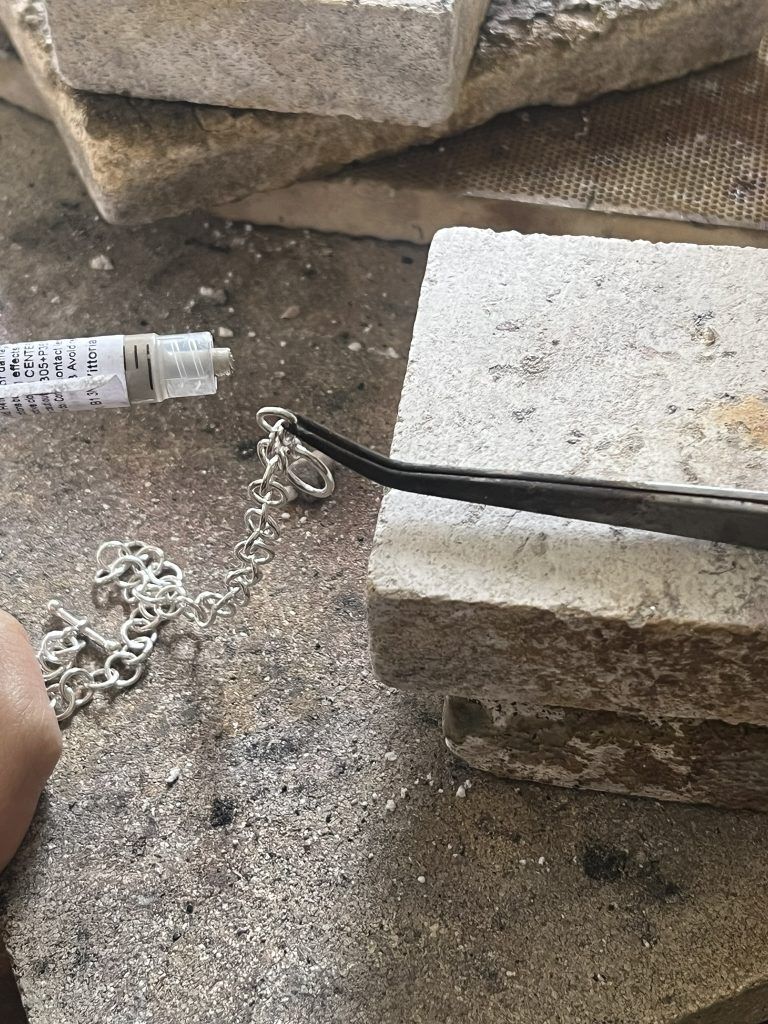
Step 4
Heat the jump ring using a handheld blowtorch until the solder melts and flows. Leave the jump ring to cool for a few seconds before quenching (cooling) in water and drying.
Repeat this process until all jump rings are soldered.
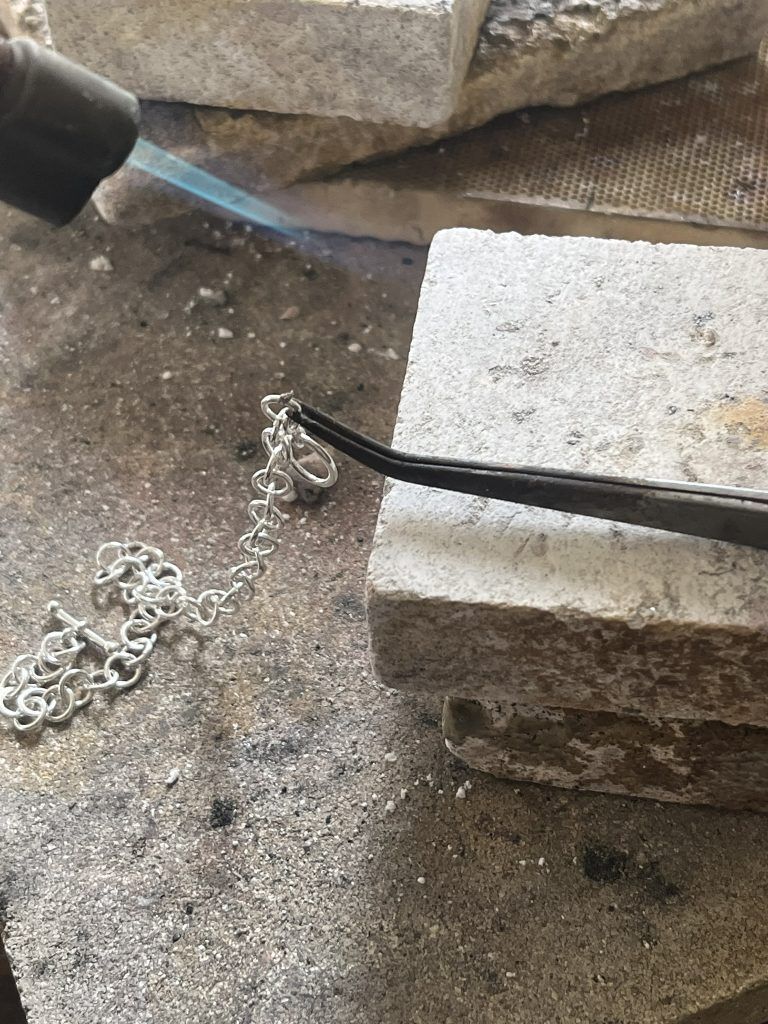
Step 5
Add the chain to a warm safety pickle solutions for 10 minutes or until clean. Then rinse and dry.
Inspect all the jump rings to ensure they are neat and well soldered. If not, repeat the soldering process.
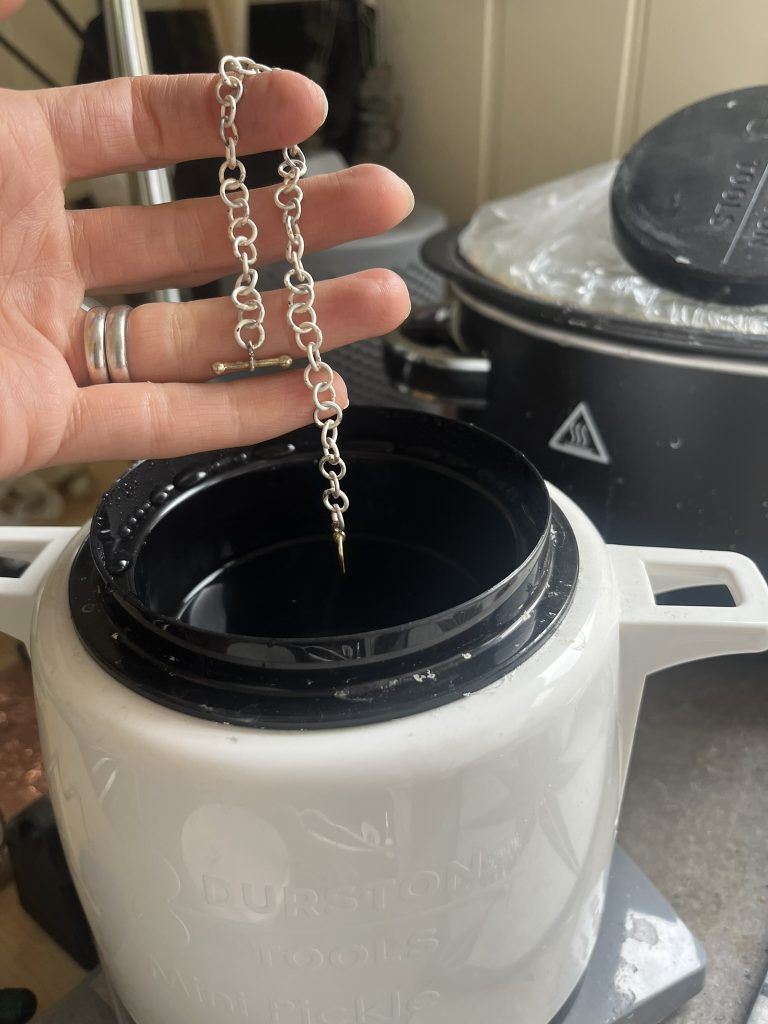
Step 6
To make the larger hoops, take the 1mm length of sterling silver wire and wrap it tightly and neatly around a cylinder shape such as a scribe or centre punch to create a coil.
Note: Using a scribe will create approximately 16-17 10mm diameter hoops.
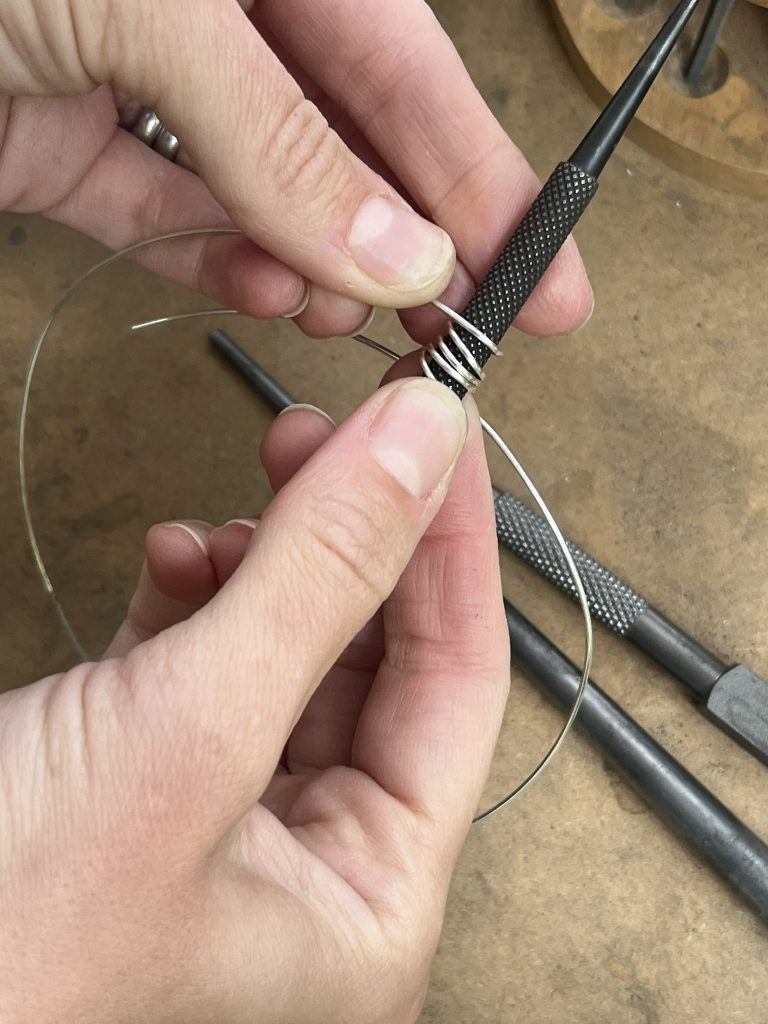
Step 7
Remove the coil from the cylinder shape and cut along all the coils using a piercing saw to create lots of uniform wire 10mm hoops/jump rings. Support the coil on a benchpeg and tape the coil together using masking tape if it is very unstable.
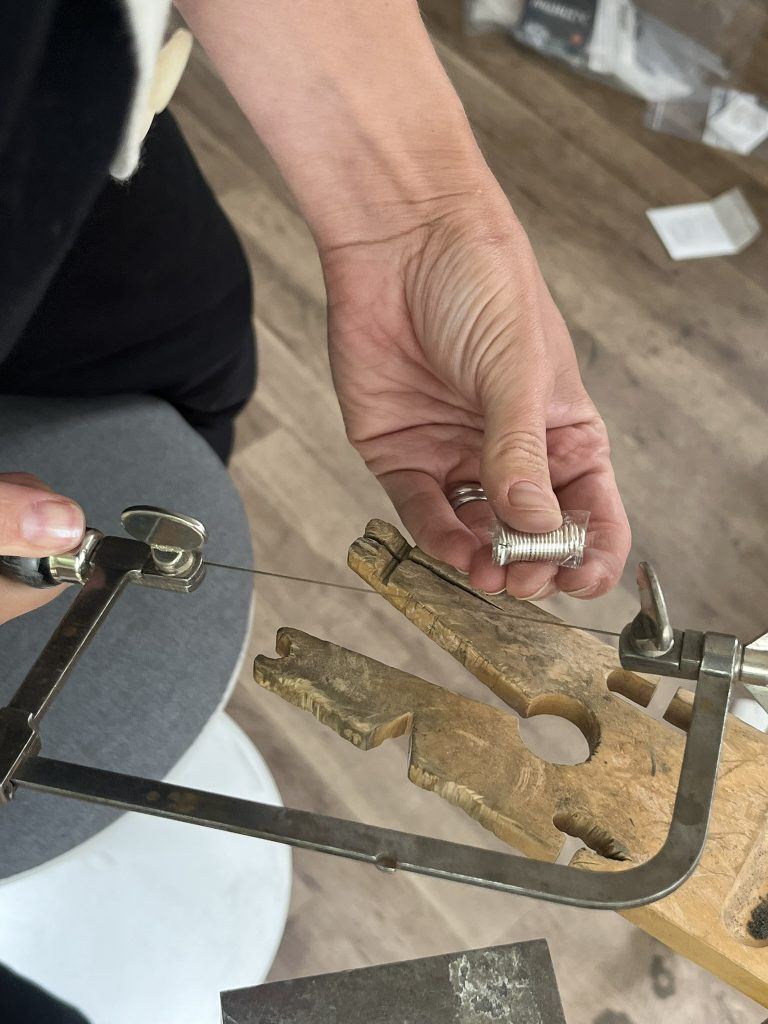
Step 8
Open each 10mm jump ring hoop using two pairs of pliers and loop them onto the chain bracelet. Close each of the 10mm jump rings individually so the ends are aligned and flush with no gaps.
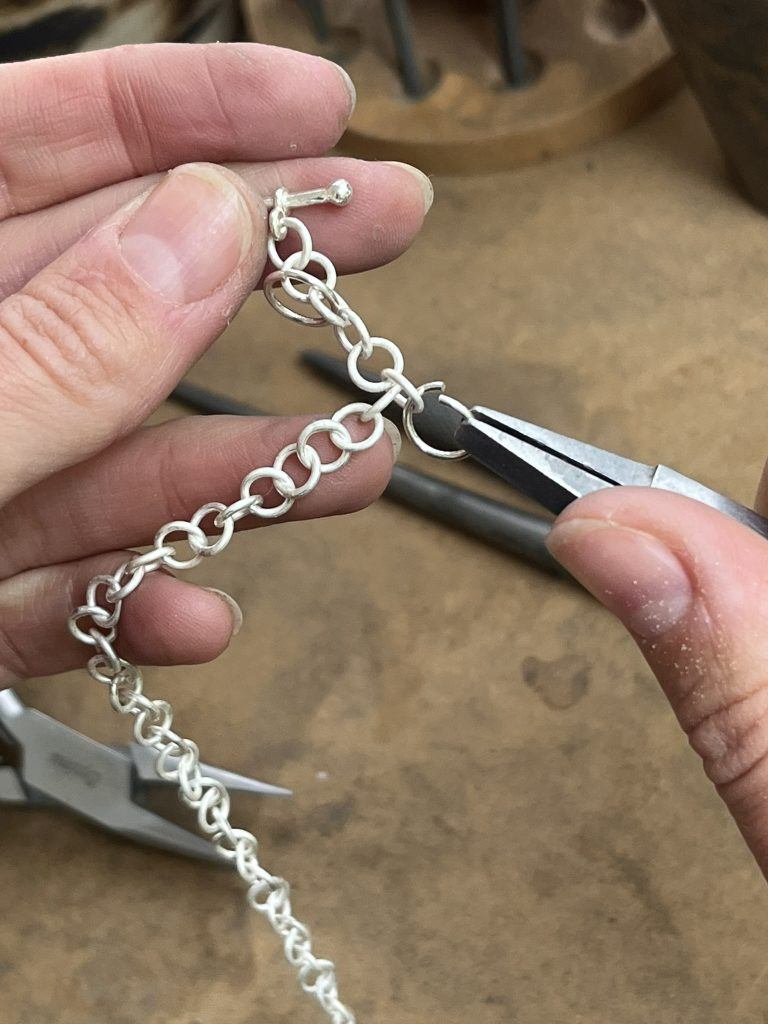
Step 9
Solder each join on the 10mm jump rings and any additional 6mm jump rings you have added. Using reverse action tweezers hold the first jump ring so that the join is clearly exposed.
Place the tweezers on a soldering block ensuring the chain is well out of the way or use a third hand to hold the tweezers.
Add a little solder paste to the jump ring join and place on a soldering block. Heat the jump ring using a handheld blowtorch until the solder melts and flows.
Leave the jump ring to cool for a few seconds before quenching (cooling) in water and drying.
Repeat this process until all jump rings are soldered.
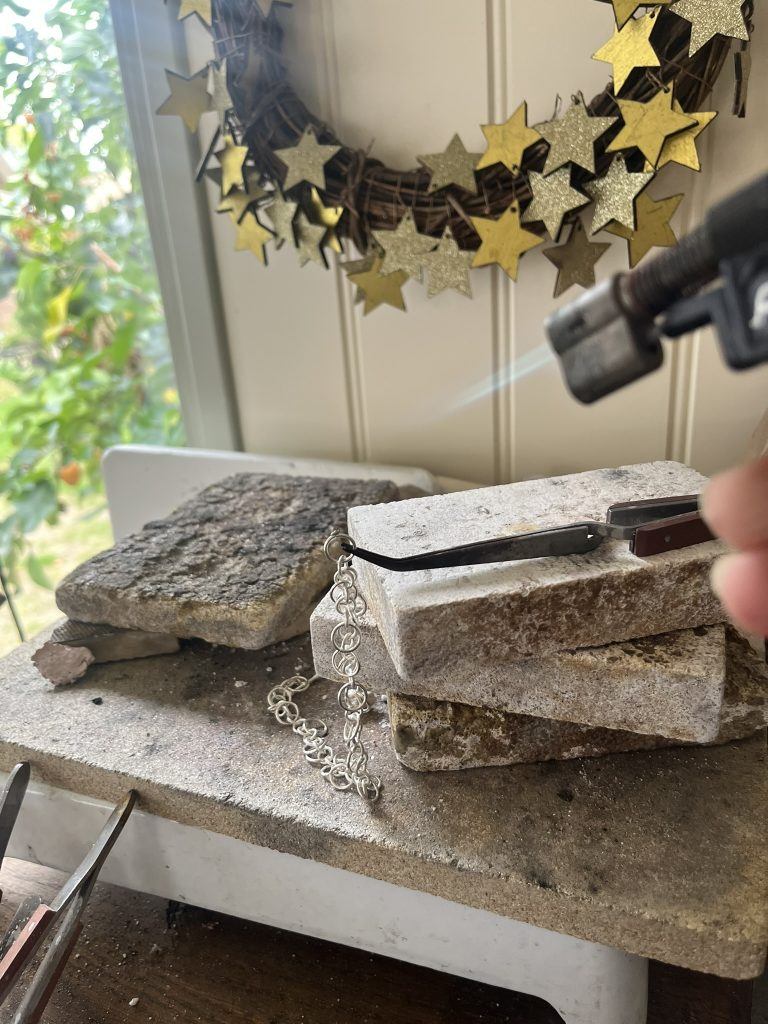
Step 10
Add the bracelet chain to a warm pickle solution for 10 minutes or until clean.
Rinse and dry.
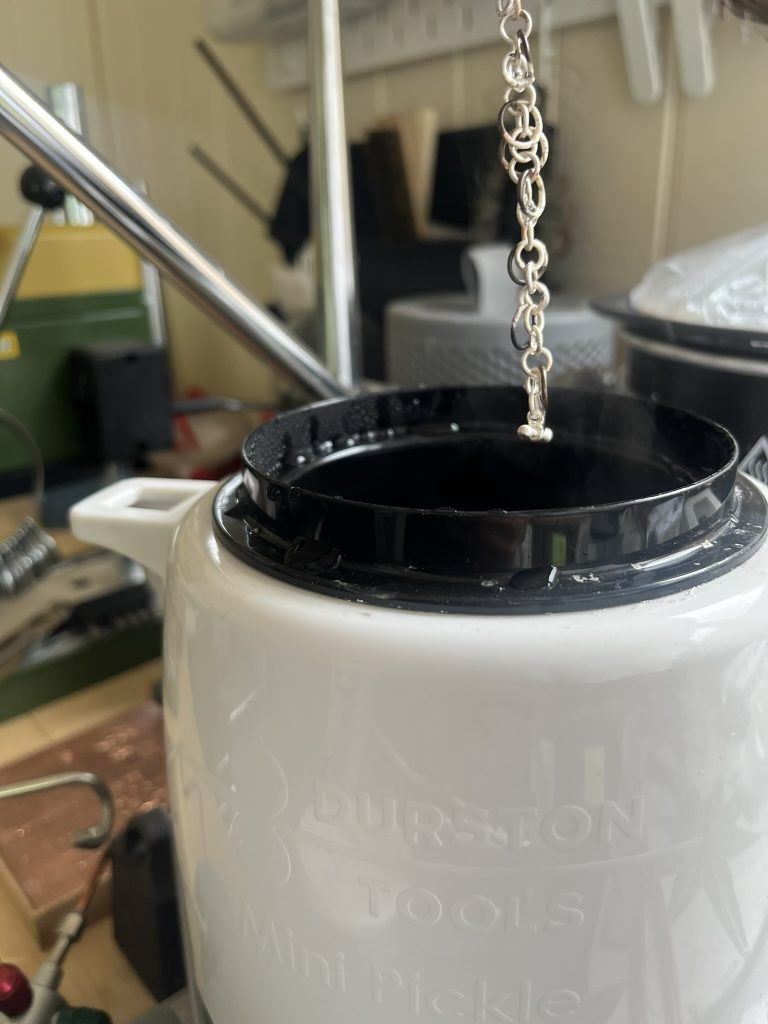
Step 11
When dry, place a soldered 10mm jump ring on the edge of a steel steel block and flatten using a hammer. You will need to hammer a section at a time and move the hoop round the edge of the steel block. You may wish to help secure the jump ring in place when hammering with a piece of double-sided tape. Repeat until all 10mm jump rings and any additional 6mm jump rings are all flattened and hammered.
Note: Ensure you keep your fingers away from the hammer. You can hammer as much or as little as you like to create different effects for the finished bracelet.
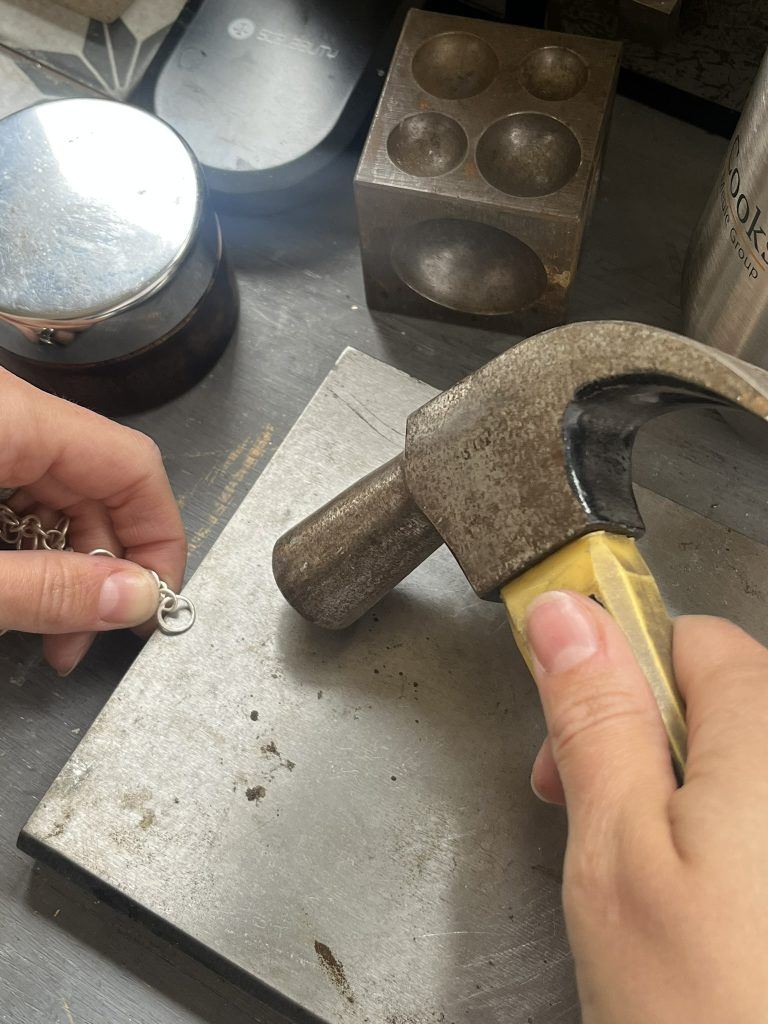
Step 12
To polishing use a barrel tumble polisher with water, barrelbrite and shot or use a silver polishing cloth to add shine.
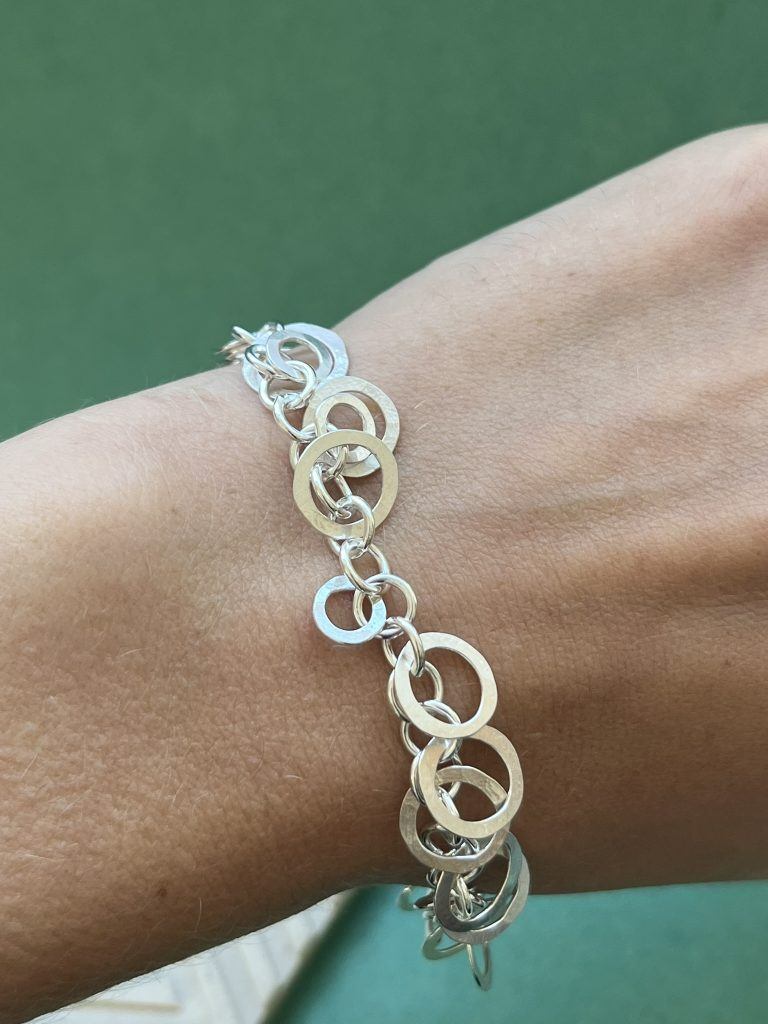

Sian Brown
Sian has been hand making her award winning jewellery in the West Midlands for over 12 years. Sian spent 10 years in Birmingham’s historic Jewellery Quarter before relocating to a quiet Worcestershire village.

